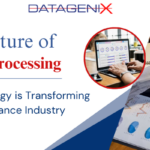Claims Software Systems: The Future of Smart Claims Handling
April 23, 2025
In today’s customer-centric world, businesses eagerly adopt claims-processing software solutions that promise an unparalleled customer experience. However, an important question arises: do these solutions promise to make customers happy, or do they merely appear good on the surface?
This investigation digs into customer-centric claims software to uncover the truth beneath the tempting promise of delight.
The critical question concerns the validity of claims software in improving the overall customer experience. While seamless integration and user-friendly interfaces are praised for their transformative effects on claims handling, it is critical to investigate whether real improvements support these claims or conceal more profound complications.
The primary challenge is determining if claims software enables customer-centricity or only serves as an illusion to capitalize on client-focused trends. By delving into these technological complexities, the goal is to determine if advertised benefits translate into genuine improvements in client pleasure or risk becoming phantom promises in pursuing customer-centric excellence.
This investigation exposes the truth behind the illusion of delight, providing organizations with insights into the actual influence of their claims software on the changing environment of customer satisfaction.
Understanding Customer-Centric Claims Software
Customer-centric claims software strives to improve how businesses manage claims by putting the customer experience at the center of their strategy. These software solutions promise to streamline the claims process, decrease complications, and improve client satisfaction.
However, the current industry hype raises questions about whether these solutions are genuinely customer-centric or capitalize on a popular word.
The Mirage of Seamless Integration
One of the most common claims made by providers of customer-centric claims software is seamless interaction with existing systems. While a smooth integration process is essential for operational efficiency, businesses should investigate whether these promises are supported.
True customer-centricity necessitates integration and an intelligent fusion that complements existing workflows while improving the customer experience.
User-Friendly Interfaces and the Illusion of Simplicity
Many claims software providers promote user-friendly interfaces as a sign of their customer-centric strategy. However, the appearance of ease can occasionally obscure underlying complications in the claims process.
Businesses must determine whether user-friendliness simplifies the client experience or only creates an illusion that ignores the complexities of the claims journey.
The Balancing Act of Automation and Human Touch
Efficient claims software relies heavily on automation. However, the delicate balance between automation and human interaction is frequently overlooked.
Clients value the efficiency of automated procedures. The software needs to be designed to preserve the empathetic and human element.
Striking this balance ensures that customer-centric claims processing software remains efficient while retaining the essential personal connection that clients desire during difficult times.
Transparency: A Cornerstone or an Illusion?
Transparent communication is frequently highlighted as a critical component of customer-centric claims software. Communicating real-time claim updates to clients increases trust.
Companies must ensure that software functionality guarantees transparency rather than just making claims. The fundamental benefit of transparency is its capacity to provide clients with clear information and improve their overall claims experience.
The Personalization Paradigm
Personalization is a common concept in customer-centricity, and claims software is no exception. A detailed understanding of each claim’s unique circumstances is required to provide a satisfactory claims process for each customer.
An effective customer-centric online benefits system should avoid a one-size-fits-all approach and consider each client’s specific requirements and preferences. Providing a tailored experience increases the perceived value of claims software, resulting in higher client loyalty and satisfaction.
Technological Ingenuity: Enhancing or Obfuscating?
In the world of customer-centric claims software, technological developments are critical. Artificial intelligence, data analytics, and machine learning can transform claims processing.
Still, their impact depends on how well they connect with the software’s larger customer-centric goals. Technology should be an assist, not a distraction, that improves rather than complicates the consumer experience.
Measuring the True Impact
Assessing the actual effect of customer-focused claims processing software requires a robust assessment methodology. Metrics like Net Promoter Scores (NPS), resolution times, and customer satisfaction scores provide insight into the software’s effects on users. Obtaining direct client feedback provides qualitative information that can be used to understand the software’s impact better and identify areas for improvement.
Conclusion
Customer-centricity goes beyond simply fulfilling the customer. Providing outstanding service throughout the claims process is critical to overall client satisfaction. Businesses must carefully analyze their software to properly handle claims, considering criteria like integration, usability, automation, transparency, personalization, and innovation.
By investing in the proper claims solutions, businesses may expedite procedures and build long-term customer relationships, resulting in great experiences.
How Health Claims Management Software Transforming The Industry?
February 7, 2025How Claims Software Can Transform Your Claims Process?
January 29, 2025The Need For Healthcare Claims Management Software
January 13, 2025Reasons You Should Invest in Claims Management Software
January 7, 2025The Essential Guide To TPA Software Features & Benefits
December 24, 2024Claims Management Software: Key To Streamlining Your Business
December 18, 2024How TPA Software Solutions Transformed Medical Claims Management?
November 20, 2024









